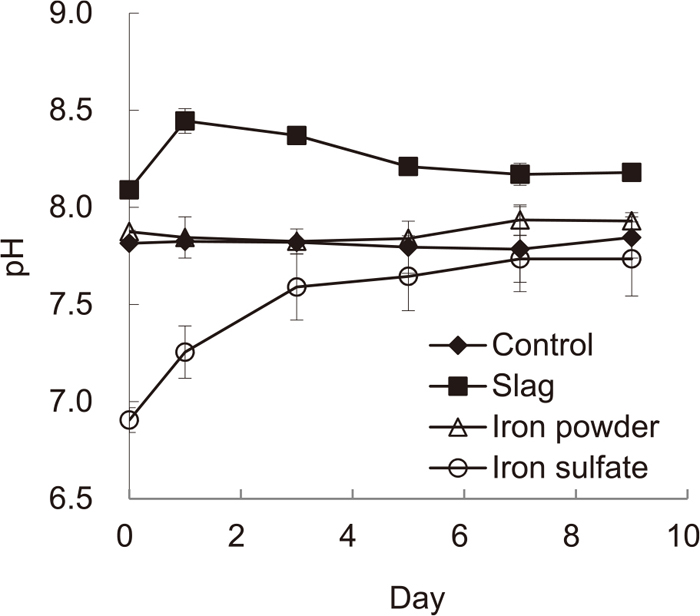Volume 56, Issue 4
Displaying 1-27 of 27 articles from this issue
- |<
- <
- 1
- >
- >|
Fundamentals of High Temperature Processes
Regular Article
-
Article type: Regular Article
2016 Volume 56 Issue 4 Pages 505-512
Published: April 15, 2016
Released on J-STAGE: April 27, 2016
Advance online publication: February 18, 2016Download PDF (1098K) Full view HTML -
Article type: Regular Article
2016 Volume 56 Issue 4 Pages 513-519
Published: April 15, 2016
Released on J-STAGE: April 27, 2016
Advance online publication: March 03, 2016Download PDF (1183K) Full view HTML -
Article type: Regular Article
2016 Volume 56 Issue 4 Pages 520-526
Published: April 15, 2016
Released on J-STAGE: April 27, 2016
Download PDF (904K) Full view HTML
Note
-
Article type: Note
2016 Volume 56 Issue 4 Pages 719-722
Published: April 15, 2016
Released on J-STAGE: April 27, 2016
Download PDF (697K) Full view HTML
Ironmaking
Regular Article
-
Article type: Regular Article
2016 Volume 56 Issue 4 Pages 527-536
Published: April 15, 2016
Released on J-STAGE: April 27, 2016
Download PDF (956K) Full view HTML -
Article type: Regular Article
2016 Volume 56 Issue 4 Pages 537-545
Published: April 15, 2016
Released on J-STAGE: April 27, 2016
Download PDF (1227K) Full view HTML
Steelmaking
Regular Article
-
Article type: Regular Article
2016 Volume 56 Issue 4 Pages 546-553
Published: April 15, 2016
Released on J-STAGE: April 27, 2016
Download PDF (1365K) Full view HTML
Casting and Solidification
Regular Article
-
Article type: Regular Article
2016 Volume 56 Issue 4 Pages 554-563
Published: April 15, 2016
Released on J-STAGE: April 27, 2016
Download PDF (2332K) Full view HTML -
Article type: Regular Article
2016 Volume 56 Issue 4 Pages 564-573
Published: April 15, 2016
Released on J-STAGE: April 27, 2016
Download PDF (1599K) Full view HTML -
Article type: Regular Article
2016 Volume 56 Issue 4 Pages 574-583
Published: April 15, 2016
Released on J-STAGE: April 27, 2016
Download PDF (1721K) Full view HTML -
Article type: Regular Article
2016 Volume 56 Issue 4 Pages 584-593
Published: April 15, 2016
Released on J-STAGE: April 27, 2016
Download PDF (2246K) Full view HTML
Chemical and Physical Analysis
Regular Article
-
Article type: Regular Article
2016 Volume 56 Issue 4 Pages 594-601
Published: April 15, 2016
Released on J-STAGE: April 27, 2016
Download PDF (1036K) Full view HTML
Forming Processing and Thermomechanical Treatment
Regular Article
-
Article type: Regular Article
2016 Volume 56 Issue 4 Pages 602-609
Published: April 15, 2016
Released on J-STAGE: April 27, 2016
Download PDF (2160K) Full view HTML -
Article type: Regular Article
2016 Volume 56 Issue 4 Pages 610-618
Published: April 15, 2016
Released on J-STAGE: April 27, 2016
Advance online publication: March 03, 2016Download PDF (700K) Full view HTML -
Article type: Regular Article
2016 Volume 56 Issue 4 Pages 619-627
Published: April 15, 2016
Released on J-STAGE: April 27, 2016
Download PDF (2867K) Full view HTML -
Article type: Regular Article
2016 Volume 56 Issue 4 Pages 628-636
Published: April 15, 2016
Released on J-STAGE: April 27, 2016
Download PDF (809K) Full view HTML
Welding and Joining
Regular Article
-
Article type: Regular Article
2016 Volume 56 Issue 4 Pages 637-646
Published: April 15, 2016
Released on J-STAGE: April 27, 2016
Download PDF (1312K) Full view HTML -
Article type: Regular Article
2016 Volume 56 Issue 4 Pages 647-653
Published: April 15, 2016
Released on J-STAGE: April 27, 2016
Download PDF (1577K) Full view HTML
Surface Treatment and Corrosion
Regular Article
-
Article type: Regular Article
2016 Volume 56 Issue 4 Pages 654-660
Published: April 15, 2016
Released on J-STAGE: April 27, 2016
Download PDF (1578K) Full view HTML
Transformations and Microstructures
Regular Article
-
Article type: Regular Article
2016 Volume 56 Issue 4 Pages 661-668
Published: April 15, 2016
Released on J-STAGE: April 27, 2016
Download PDF (680K) Full view HTML -
Article type: Regular Article
2016 Volume 56 Issue 4 Pages 669-677
Published: April 15, 2016
Released on J-STAGE: April 27, 2016
Download PDF (1439K) Full view HTML -
Article type: Regular Article
2016 Volume 56 Issue 4 Pages 678-684
Published: April 15, 2016
Released on J-STAGE: April 27, 2016
Advance online publication: February 25, 2016Download PDF (785K) Full view HTML
Mechanical Properties
Regular Article
-
Article type: Regular Article
2016 Volume 56 Issue 4 Pages 685-692
Published: April 15, 2016
Released on J-STAGE: April 27, 2016
Download PDF (714K) Full view HTML -
Article type: Regular Article
2016 Volume 56 Issue 4 Pages 693-699
Published: April 15, 2016
Released on J-STAGE: April 27, 2016
Download PDF (1123K) Full view HTML -
Article type: Regular Article
2016 Volume 56 Issue 4 Pages 700-707
Published: April 15, 2016
Released on J-STAGE: April 27, 2016
Download PDF (1178K) Full view HTML
Social and Environmental Engineering
Regular Article
-
Article type: Regular Article
2016 Volume 56 Issue 4 Pages 708-713
Published: April 15, 2016
Released on J-STAGE: April 27, 2016
Download PDF (826K) Full view HTML -
Article type: Regular Article
2016 Volume 56 Issue 4 Pages 714-718
Published: April 15, 2016
Released on J-STAGE: April 27, 2016
Download PDF (1084K) Full view HTML
- |<
- <
- 1
- >
- >|


